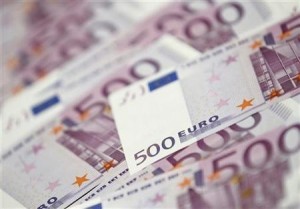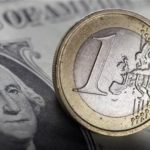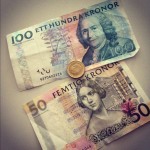 The euro rose fro a third day against the US dollar, after data showed that growth in the euro zone manufacturing sector remained in a reasonable range to the strongest level in almost three years, and unemployment in Germany, the biggest economy in the euro area declined to a two-year low last month, adding to signs the recovery is gaining traction.
The euro rose fro a third day against the US dollar, after data showed that growth in the euro zone manufacturing sector remained in a reasonable range to the strongest level in almost three years, and unemployment in Germany, the biggest economy in the euro area declined to a two-year low last month, adding to signs the recovery is gaining traction.
EUR/USD touched a session high at 1.3802 at 09:44 GMT, after which consolidation followed at 1.3796, adding 0.18% for the day. Support was likely to be received at March 31st low, 1.3724, while resistance was to be met at March 31st high, 1.3807.
Euro zone’s final manufacturing PMI for March met the preliminary reading at 53.0, which was announced on March 24th, data by Markit Economics showed today. However, the index eased from Februarys reading of 53.2, but remained within close range to the strongest level in almost three years. Euro areas PMI has been above the key levl of 50.0, which indicates expansion in the sector, since July last year. Gauges for the four largest economies in the 18-nation common currency bloc all indicated growth last month.
“The goods-producing sector is on course to provide a meaningful boost to the overall economy in the first three months of the year,” said Chris Williamson, chief economist at Markit in London, cited by Bloomberg. Still, “a self-sustaining recovery is not yet in place and reliant at least in part on price discounting to win sales. Such deflationary signals will continue to spook policy makers.”
Manufacturing output in Germany, the largest euro zone economy, slowed down to 53.7 last month from an initial estimate of 53.8. French manufacturing switched from contraction to expansion for the first time in two years, with the corresponding PMI, coming in at 52.1 in March, from 49.7 in the previous month.
Also fanning positive sentiment, the final manufacturing PMI for Italy advanced to a reading of 52.4 last month from 52.3 in February, while in Spain the PMI rose to 52.8 in March from 52.5 in the prior month.
In addition, the German unemployment rate came in at 6.7% last month, the lowest since March 2012 and matching the downward revised Februarys jobless rate.
Although the data added to evidence that the economy is gaining momentum, the common currency has risen more than 7% against the US dollar in the past year and inflation bottomed at the weakest level in four years last month, underlining the risks to the outlook.
Data showed yesterday that euro zone’s preliminary annualized index of consumer prices, evaluated in accordance with Eurostat’s harmonized methodology, slowed down to 0.5% in March from 0.7% in February, trailing analysts’ forecasts for a smaller decline to 0.6%. March’s inflation rate is the weakest since October 2009 and marked a sixth straight reading below 1%, remaining quite far from European Central Bank’s inflation target of just under 2%.
The weak price pressure in the 18-nation common-currency bloc may prompt the ECB to introduce additional measures at its upcoming policy meeting this Thursday. At its last policy meeting, on March 6th, the ECB officials maintained the main interest rate at a record-low 0.25%.
The central bank forecast an inflation rate of 1% in 2014 and 1.3% next year, well below its target of 2%, which is used as a benchmark for price stability in the medium term.
Last week, ECB President Mario Draghi reiterated that he will “take additional monetary policy measures” if “any downside risks” appear to its forecast for a “gradual closing of the output gap in the coming years.” The risks include weak price pressure and a stronger euro, he added.
Meanwhile, greenback’s demand was pressured after Federal Reserve Chair Janet Yellen said yesterday at a conference in Chicago that the central bank needed to do more to fight against unemployment, because keeping interest rates near zero for more than five years and swelling its balance sheet with asset purchases seemed not to be enough. She also added that the US economy still needed monetary stimulus for “some time” and that most of the Fed officials shared the same opinion.
“After Janet Yellen’s comments, the dollar came off its highs, particularly against the commodity currencies,” said Callum Henderson, the Singapore-based global head of foreign-exchange research at Standard Chartered Plc., cited by Bloomberg. “In the wake of a fall in cross-asset volatility with China’s PMI data also helping sentiment, you’ve seen renewed focus on carry. The higher yielding currencies in G-10 and emerging markets are doing better.” Australia’s dollar is one of the G-10 currencies.
Market players deemed Yellen’s comments as rather dovish, as she signaled the central bank will press on with trimming stimulus, but at the same time, the Fed will not be in a hurry to raise borrowing costs.





